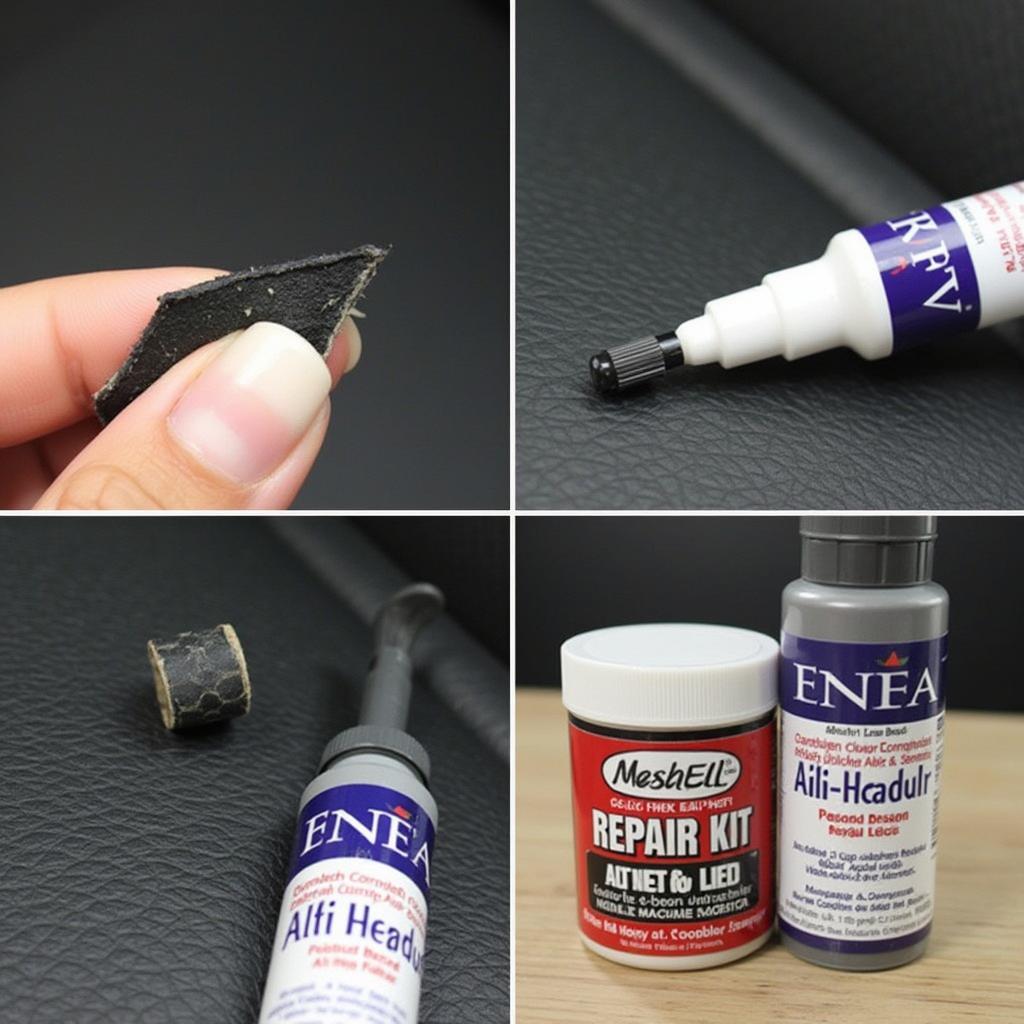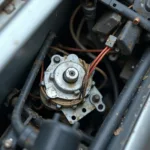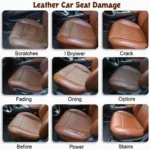A hole in your car seat can be an eyesore and affect the overall value of your car. Fortunately, with the right tools and techniques, you can often repair it yourself. This guide provides a step-by-step approach to fixing holes in your car seats, whether it’s a small tear, a burn mark, or a larger gash.
Assessing the Damage: What Type of Hole Do You Have?
Before you start, it’s crucial to assess the damage. Different types of holes require different repair approaches.
- Small Tears and Punctures: These are usually caused by sharp objects and can often be fixed with a simple patch or filler.
- Burn Holes: Cigarettes are a common culprit for these. Repairing burn holes involves cleaning the area and using a filler to restore the seat’s surface.
- Larger Gashes and Cuts: These require more extensive repair, often involving patching and sewing techniques.
Gathering Your Supplies: The Right Tools for the Job
Having the right tools and materials is essential for a successful repair. Here’s a list of common items you might need:
- Cleaning Supplies: Leather or upholstery cleaner, rubbing alcohol, microfiber cloths.
- Repair Kit: A leather or vinyl repair kit (depending on your car seat material) usually includes a patching material, adhesive, and color-matching compounds.
- Filler: Leather filler or a heavy-duty fabric filler for larger holes.
- Scissors: For cutting patches and trimming excess materials.
- Sub-patch Material: A piece of sturdy fabric (like canvas) slightly larger than the hole, for larger repairs.
- Needles and Thread: If sewing is required, choose a strong thread that matches your car seat color.
Repairing the Hole: Step-by-Step Guide
Follow these steps for a professional-looking repair:
Step 1: Preparation is Key
- Clean the area around the hole thoroughly using a suitable cleaner for your seat material. Allow it to dry completely.
- If there are any loose threads or frayed edges, carefully trim them with scissors.
Step 2: Patching Small Tears and Punctures
- If the hole is small, use a leather or vinyl patch from your repair kit.
- Apply a small amount of adhesive to the back of the patch and firmly press it onto the hole.
- Allow the adhesive to dry completely as per the manufacturer’s instructions.
Step 3: Addressing Burn Holes
- For burn holes, gently scrape away any charred material with a plastic scraper or the back of a spoon.
- Apply a leather filler to the hole, building it up slightly higher than the surrounding surface.
- Let it dry completely, then sand it down until it’s flush with the seat.
Step 4: Repairing Larger Gashes
- Cut a sub-patch from your sturdy fabric, ensuring it’s slightly larger than the hole on all sides.
- Apply adhesive to the sub-patch and carefully insert it through the hole from the back of the car seat fabric. Press it firmly to secure it.
- Once the sub-patch is secure, apply leather or fabric filler to the hole, covering the sub-patch and leveling the surface.
Step 5: Matching the Color and Texture
- Once the filler is dry, use the color-matching compound from your repair kit to blend the repaired area with the surrounding seat material.
- Apply thin layers, allowing each layer to dry before applying the next.
- If necessary, use a texture sponge or a graining tool (available in most repair kits) to replicate the seat’s original texture.
Step 6: Final Touches
- After the repair is complete and the color has dried, apply a leather or upholstery conditioner to protect the repaired area and restore the seat’s suppleness.
Expert Insight: Words from a Pro
“A common mistake people make is rushing the drying process,” says John Miller, a seasoned car upholstery specialist with over 20 years of experience. “It’s crucial to allow each layer of filler, adhesive, and colorant to dry completely for a long-lasting repair.”
Frequently Asked Questions
Can I use super glue to repair a car seat tear?
While super glue might seem like a quick fix, it’s not recommended for car seats. It can create a stiff, noticeable bond that can crack over time due to the seat’s constant movement.
How do I prevent future damage to my car seats?
Use seat covers, avoid eating or drinking in your car, and be mindful of sharp objects to prevent tears and punctures.
Can I repair a hole in a heated car seat?
Repairing a heated seat is more complicated and may require professional help to avoid damaging the heating elements.
Need More Help?
If you’re unsure about tackling the repair yourself or if the damage is extensive, it’s always best to consult a professional car upholstery repair specialist. They have the expertise and tools to handle complex repairs and restore your car seats to their former glory.
For more helpful car repair tips and advice, check out our other articles:
Remember, a little care and attention can go a long way in maintaining the pristine condition of your car’s interior.



